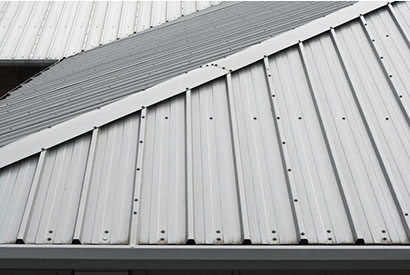As a commercial building owner, you know the importance of inspecting your roof on a regular basis. This helps you extend the useful life of the roofing system, while minimizing the need for costly repairs and downtime. Natural debris that’s allowed to build up on your commercial roof can be very damaging.
Consequences of Debris Buildup
It just takes a bit of moisture to make those pretty autumn leaves biodegrade into a wet, heavy mess that gets into your drains and scuppers, causing blockages and clogs. This then encourages the growth of mold, fungi and mildew. Failure to remove that debris will result in a back-up of water, increasing the live load on your roof deck.
Just one inch of standing water can add five pounds per square foot of live load on the roof assembly. If left to accumulate, that standing water can damage roofing membranes, reduce flexibility and reduce the life of the roof.
In the winter, the problem is compounded as pooling water freezes and expands, getting into tiny cracks or under flashings. Adding more ice weight on top of that can cause structural damage and costly repairs, or in the most extreme cases, roof collapse.
Preventative Maintenance Lowers Risk
Your maintenance crew should be paying attention to leaves and other debris accumulating around drains and scuppers. In the fall, prompt debris removal is critical in preventing buildup and blockage. If you see a lot of standing water, this may signal a blocked drain.
Partially blocked drains will allow water to flow through sluggishly, so even if standing water isn’t an issue per se, you may still have a serious drainage problem. Previous ponding is often indicated by staining on the roof’s surface. Keep in mind, not all problems caused by leaves and other debris are obvious to the untrained eye, which is why it’s absolutely essential to have a qualified roofer inspect your commercial roof regularly.
Professional Inspection
In addition to leaf and debris removal and disposal, a qualified roofing specialist will test the water of internal and external drains, then perform a detailed inspection of gutters and downspouts. They will also examine strainers to ensure they are secure and in good working order. Recognizing early problems takes a professional to detect issues with flashings, sealants, mortar, seams and penetrations. Roofers will also check gutters and downspouts for sagging, loose connections and missing or broken fasteners.
Contact Ferris Roofing
Routine inspections and preventative maintenance programs are key to a long roof life span. Contact us today for a commercial roof inspection at 817-727-4214.


